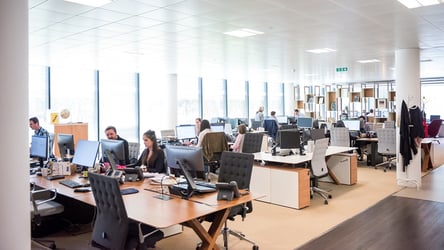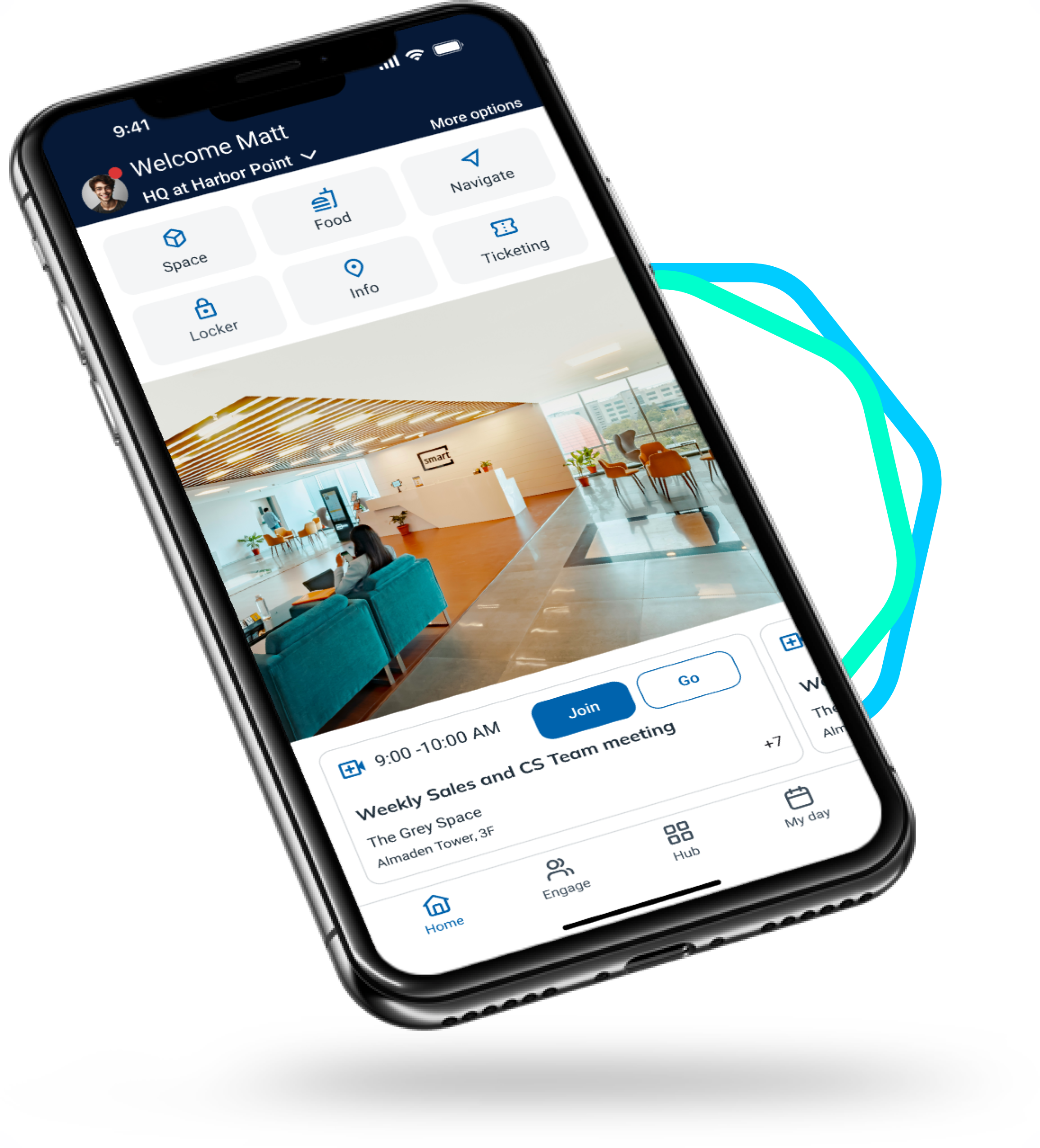How Experience‑First Offices Reduce Turnover & Boost Productivity
October 1, 2025 CXAI Team
The cost of employee turnover is staggering. Beyond the financial burden, every departure takes with it institutional knowledge, relationships, and momentum.
While salary still matters, today’s employees often make stay-or-leave decisions based on their daily workplace experience. When work is filled with friction, inflexible policies, and disconnected tools, disengagement rises, and productivity suffers. The warning signs are already visible, as roughly half of U.S. employees are either actively seeking or watching for a new job. On the contrary, research shows that nearly half of voluntary departures could be prevented if organizations improve the employee experience.
Let’s take a deep dive into why creating an experience-first workplace is becoming a critical strategy for retention
Experience as a Driver of Productivity
Reducing turnover is only part of the story. When organizations rethink workplace design and put employee experience at the center, they unlock higher levels of innovation, stronger customer satisfaction, and greater profitability.
A workplace that respects employees’ time, eliminates friction, and creates seamless interactions not only retains talent but also inspires people to do their best work. Conversely, fragmented systems and disconnected tools drain energy and creativity, leaving employees disengaged and more likely to consider leaving.
Experience-first offices reverse this trend by giving time back to the workforce. Instead of battling inefficiencies, employees can focus on the work that fuels creativity and execution. We’ve seen this play out with a global investment management firm that used CXAI to simplify its digital workplace. By cutting redundant tools and replacing complex workflows with visual easy-to-use interface, the organization saw higher employee engagement and measurable gains in operational efficiency.
Flexibility as a Loyalty Lever
Flexibility has evolved from a workplace perk into a non-negotiable expectation. Employees who have the freedom to decide how, when, and where they work report stronger engagement and are less likely to explore other opportunities.
Hybrid models, in particular, strike the balance employees want: reducing attrition while maintaining and often boosting productivity. Enterprises that embrace this adaptability strengthen loyalty, while those that don’t risk losing talent to more flexible competitors. For many organizations, return-to-office mandates have made schedule flexibility more difficult to achieve, but that doesn’t mean flexibility is off the table.
It’s crucial to recognize that employees also seek flexibility in how they navigate the workplace, access tools, and collaborate with colleagues. True flexibility means removing barriers, simplifying choices, and enabling employees to work effectively from wherever they are.
Partnering with CXAI, a renowned tech company expanded flexibility by equipping employee communities with digital tools to organize events, promote activities, and invite participation. The result was a profound shift in workplace culture, with over 200,000 weekly interactions fostering new avenues for connection and belonging.
Workplace as a Destination
Employees today aren’t returning to the office for a desk; they’re returning for experiences, collaboration, culture, and connection.
Workplaces that feel like destinations rather than obligations are quickly becoming a critical differentiator in the talent competition. A recent Cisco study found that 72% of employees are positive about returning to the office, given that those spaces are equipped for collaboration and brainstorming.
This suggests that a long commute for a day of emails and solitary tasks simply isn’t compelling. But a workplace designed for connection, where colleagues, tools, and resources are easily accessible, becomes a magnet for engagement and loyalty.
A global media and entertainment company tapped CXAI to streamline workplace interactions and reduce everyday friction. Rolled out across 50+ locations worldwide, the easily configurable platform supports hybrid work while turning offices into hubs that draw employees in and build community.
The Business Case for Leaders
For leaders, the impact of experience-first offices goes far beyond HR metrics. Stronger retention lowers the steep costs of hiring and onboarding while safeguarding the institutional knowledge that drives continuity and performance.
Productivity gains open capacity for innovation and growth. And in a return-to-office environment, designing the workplace around employee experience becomes a clear advantage in attracting and keeping top talent.
RTO mandates alone won’t guarantee engagement. Workplaces that fail to support employees risk turnover and low morale, while those that enable meaningful interactions and ease of work foster loyalty and stronger performance.
A global enterprise demonstrated how this works by turning underused areas into collaboration hubs with the help of CXAI. The shift not only improved space efficiency but also created an environment where teamwork thrives
Shaping What’s Next
The future of work hinges on how organizations design the office. Workplaces that prioritize people don’t just reduce turnover, they inspire loyalty, fuel productivity, and create environments where employees thrive.
At CXAI, we make this future attainable. We help enterprises turn the workplace into a true driver of growth and engagement by eliminating friction, connecting tools, and transforming static spaces into responsive ecosystems. Ready to reimagine the employee experience? Book a demo today and see the future of work in action.

.png)

.png)


-1.png?width=450&height=250&name=Featured-%205%20Ways%20a%20Mobile-First%20Approach%20Improves%20Employee%20Experience%20%20(2)-1.png)



